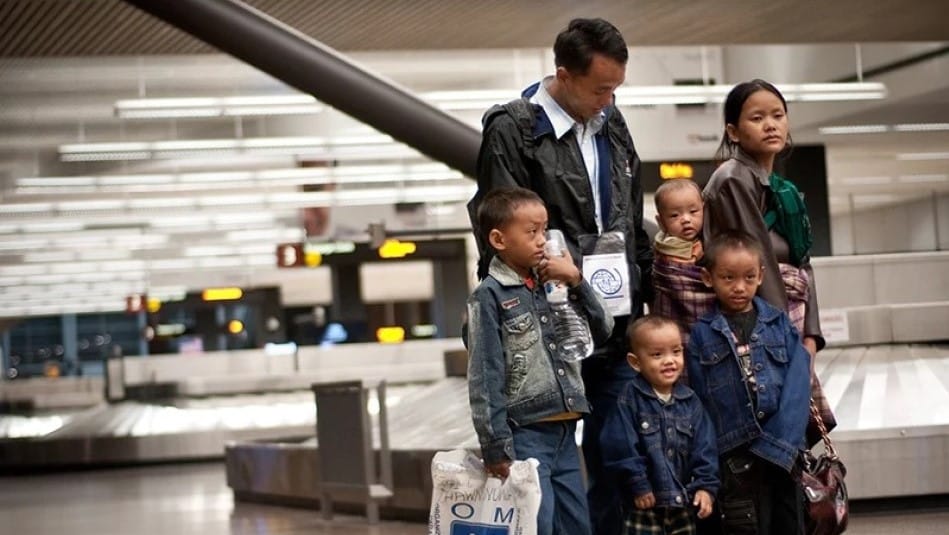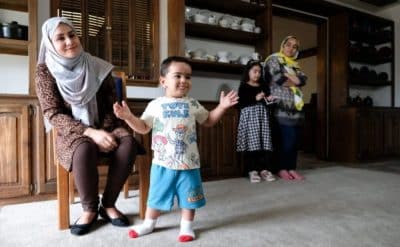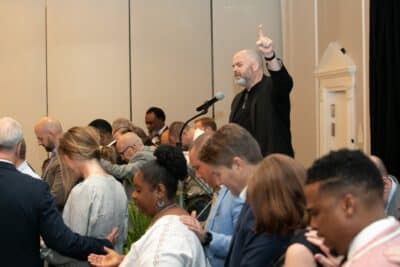St. John’s Episcopal Church in Plymouth, Michigan, has long owned and maintained an adjacent four-bedroom house, first as a rectory and later as a youth center. Now, the home will undergo a new transformation. The congregation plans to convert it back into living space to accommodate some of the many refugees who are being resettled in the Detroit area and southeastern Michigan.
The project is called St. John’s House for New Americans. A fundraising effort is nearly complete, with about $30,000 left until the church reaches its $120,000 goal. Church leaders expect this month to select a contractor to soon begin the renovations. Grants from the Diocese of Michigan will help cover the cost of demolition, electrical and plumbing updates, drywall, tile, flooring and painting.
“I just know it’s God doing this,” said Betsy Sole, the project’s coordinator who has been a member of St. John’s for more than 20 years. She told media that some of the cost of the renovations will be offset by donations of fixtures, appliances, volunteer labor and other project needs.
To welcome refugee families, the congregation is partnering with the nonprofit Samaritas, a social services agency that has supported families in Michigan for almost 90 years. It is one of several organizations that regularly resettles refugees in the state.
With offices in a half dozen Michigan cities, Samaritas is an affiliate of Lutheran Immigration and Refugee Service, one of 10 agencies with federal contracts to facilitate refugee resettlement in the United States. Several of the 10 agencies are faith-based, including Episcopal Migration Ministries.
Your tax-deductible gift helps our journalists report the truth and hold Christian leaders and organizations accountable. Give a gift of $30 or more to The Roys Report this month, and you will receive a copy of “Hurt and Healed by the Church” by Ryan George. To donate, click here.
Michigan is ranked among the top states in refugee resettlement, with 534 refugees arriving in the state in the fiscal year that ended in September 2022. Only California, Texas, New York and Kentucky welcomed more individuals that year.
Nationwide, more than half of the 11,400 refugees welcomed in the prior fiscal year came from the Democratic Republic of the Congo and Syria, while the next most frequent nations of origin were Afghanistan and Ukraine.

When the project at St. John’s is complete, possibly later this year, some of those refugees will be offered the church’s house as a temporary residence when they arrive in the Detroit area. From there, they can get established in the community before finding a more permanent home. Refugees typically are employed and self-sufficient within their first 12 to 18 months of arriving, Sole said.
Then, when those refugees move into a new home, another newly arrived refugee family will be offered accommodations at St. John’s Home for New Americans.
“We happen to have the house and the space to do this, where many don’t,” the Rev. John Conners, St. John’s interim rector, told ENS. “We’re hoping this becomes a community-wide ministry for refugees.”
Plymouth is a city of about 9,000 people a half hour west of downtown Detroit. St. John’s is an aging congregation of just under 200 members, with attendance of about 100 each week at the church’s in-person and online services, Conners said.
The church’s house was built in the 1960s as a rectory but was left vacant years later when the congregation began offering its priests housing allowances to find homes elsewhere in town, Conners said. At that time, quite a few young families attended St. John’s, so it made sense to turn the house into a youth center by converting some of the bedrooms and a bathroom for other uses.
As the congregation aged, however, there was less and less need for the youth center, which has been vacant for several years. “The youth program basically disappeared at some point,” Conners said. “The kids all grew up.”
The idea for a new use for the house came to Sole in 2021, when the United States was scrambling to bring 50,000 Afghans to this country after the U.S. military withdrew from their home country in August 2021, allowing the Taliban to take control. Those Afghans, who had faced the threat of persecution for supporting the American war effort, were not technically admitted to the United States as refugees but through a special humanitarian parole program. Even so, Sole was reminded of her own family’s experience welcoming refugees in the 1950s.
Sole grew up in Minneapolis, Minnesota, and her church there helped support a refugee from Hungary who had resettled in their community. Sole’s family grew close to the man, and later her father even served as best man at the Hungarian refugee’s wedding.
Sole wondered how St. John’s might offer similar support for refugees arriving in the United States today. “Finding housing for large families is particularly difficult for refugees and their sponsors,” she said, so she and other church leaders began developing a proposal for putting the former rectory and youth center to that use.
They presented the idea to the vestry, which signed off on it, as did the Diocese of Michigan, and Samaritas was grateful for the offer of additional housing assistance. St. John’s was not able to commit any money to the project from its annual budget, but the fundraising effort succeeded in generating financial support from individual parishioners and other members of the community.
Now Sole is looking forward to the church selecting a contractor to oversee the interior work, which she expects will take about three months to complete. Afterward, some of the money raised will go to furnishing the home.
At the same time, the congregation is working with community partners to develop a team to welcome new neighbors when they are ready to move in. The new arrivals likely will need help with transportation, basic supplies and navigating processes like school enrollment and job searches.
“We’re really focused on this being something for the whole community, so we have said anyone can help us,” Sole said.
This article originally appeared at Episcopal News Service.
David Paulsen is an editor and reporter for Episcopal News Service.




















One Response
It’s encouraging to see a church using the facilities they already have to shift directions and minister to people in a different and very practical way.